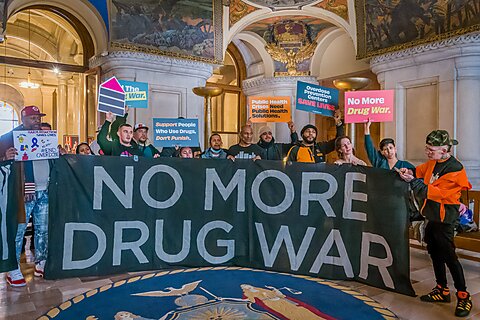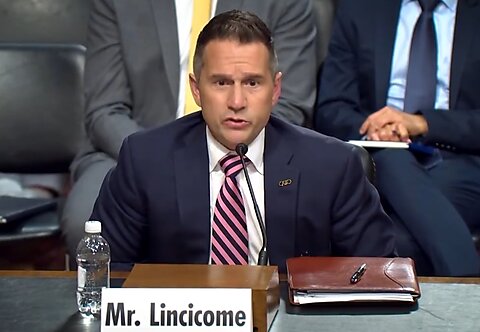Romina Boccia and Dominik Lett
On the heels of a new Congressional Budget Office (CBO) report that highlights the need for Congress and the White House to get serious about reining in federal spending and debt, it’s critical to understand that high debt levels are not just numbers on a page; they have real‐world consequences. As debt grows and interest costs rise, irresponsible spending by Congress and the White House is taking a larger toll on American workers, reducing economic opportunity and their take‐home incomes significantly. It also puts our nation at greater risk of a sudden fiscal crisis.
The High Price of High Debt
Under highly optimistic assumptions that do not reflect already anticipated congressional moves to adjust tax and spending policies, the CBO projects that debt will reach 122 percent of GDP by 2034, as interest on that debt will exceed spending on defense this fiscal year. A previous CBO report illustrated how rising debt would make Americans poorer, reducing per‐person income by $14,500 in the year 2054, based on CBO projections that assume the debt will rise to nearly three times the size of the US economy. Excessive government debt drags down the economy by crowding out more productive investments that improve American living standards.
Additionally, as debt grows unabated, there is the risk of a sudden loss of confidence in bond markets, with investors demanding much higher interest rates that could trigger a debt doom loop and broader fiscal crisis. The 2009 Greek debt crisis and the UK’s 2022 bond market turmoil demonstrate how a relatively small catalyst can disrupt financial markets and lead to a rapid surge in interest rates that forces severe austerity measures, from sudden spending cuts to ill‐conceived tax increases.
Congress and the Biden administration should cut spending now while the economy is growing and conditions are favorable for deficit reduction, alleviating pressure on interest rates and the federal debt to grow, and before a fiscal crisis forces their hands. US legislators should learn lessons from what happened in the UK and Greece where a sudden change in investor perceptions triggered crises, instead of repeating their mistakes.
Beware of Entering a Debt Doom Loop
If Congress and the White House continue to spend with reckless abandon, high and rising US debt may trigger a debt doom loop, which might play out like this: Something could trigger investors to determine that the risk of holding US government debt has increased, whether that’s a change in perception about a higher risk of default, greater inflation, or some other economic or political event. At that point, investors would demand higher bond yields to continue lending to the US government. Higher bond yields can then create a feedback loop by increasing the cost of servicing the national debt, which then leads to more borrowing just to pay the additional interest on the debt. Should a bond yield surge be sudden, large, and unmitigated, this self‐perpetuating cycle can quickly escalate into a fiscal crisis.
The classic example of this doom loop dynamic is the 2009 Greek debt crisis. As Cato’s Ryan Bourne explains:
“Greece was able to borrow relatively cheaply until suddenly it wasn’t (Figure 7). There, the trigger for the crisis was the newly elected government’s revelation that in 2009 the country was running a mammoth deficit of almost 12.5 percent of GDP, much higher than the previous government had estimated.24 That shifted perceptions about the country’s fiscal sustainability and creditworthiness, leading to its 10‐year bond yield jumping from 6.5 percent to 29.2 percent within two years. This was a precursor to a severe dose of enforced austerity alongside three international bailouts.”
Of course, the US has many advantages that set it apart from Greece, including providing the world’s primary reserve currency, strong financial institutions, transparent government fiscal reporting, a large economy, and debt that is primarily held by domestic institutions and investors. This limits US exposure to a Greek‐like debt doom loop, but it doesn’t insulate it from doom loop dynamics completely.
Over the long run, an expectation that the US might come to rely on money‐printing to inflate away its unsustainable debt obligations may result in sudden shifts in investor sentiment with potentially dire economic consequences. To better understand how poor fiscal governance can rock the boat, it’s worth considering recent occurrences in the UK, which offers a much better comparison with the US.
In late September 2022, the UK government unveiled a mini‐budget that included energy subsidies (with large, unbounded costs), unfunded tax cuts, and increased borrowing. The announcement led to a sharp sell‐off in the UK’s sovereign bonds (gilts), and investors demanded higher yields to compensate for the perceived increase in risk. The pound dropped to a 37‐year historic low, and mortgage rates surged. The Bank of England stepped in, temporarily expanding its balance sheet by purchasing £19.3 billion of gilts. The government also walked back its irresponsible deficit spending plans, contributing to a subsequent decline in 30‐year gilt yields.
One key takeaway from these incidents is that a sudden bond crisis can propagate from a single catalyst in unanticipated ways. Fiscal crises can often be difficult to predict, even if they appear obvious in hindsight, and can cause unforeseen financial disruption. In the UK, for example, the bond yield surge exposed over‐leveraged pension funds, threatening the UK’s retirement system. In Greece, the fiscal crisis and the following austerity resulted in social unrest and economic stagnation. The key takeaway lesson for the US should be to err on the side of caution by addressing the unsustainable growth in the US debt before bond markets force corrective action.
It’s worth noting that the Bank of England’s intervention was compelled by the government’s tone‐deaf fiscal policy. Legislators should pay closer attention to the interactions between fiscal policy and monetary policy, especially if they are serious about getting interest rates under control. With above‐target US inflation that has only recently slowed down, the Biden administration and Congress would be wise to put forth credible deficit‐reduction plans sooner rather than later to signal to investors that the US is getting its fiscal house in order and to reduce interest rates and inflation in a proactive manner.
Stabilize the Debt
Now is not the time to be sanguine about high debt and deficits. With interest rates unlikely to dip back to the lows seen in the 2010s as federal debt expands, government borrowing costs will rise. Legislators should be more wary of the risk of a debt doom loop, where a sudden loss of investor confidence can cause a feedback loop of surging bond yields, interest spending, and borrowing that leaves policy‐making decisions between a rock and a hard place. The UK and Greece offer cautious tales about how economic conditions can suddenly turn sour in response to changing investor sentiments about a country’s fiscal stability.
US legislators should take measures today to stabilize the US debt‐to‐GDP ratio at no higher than 100 percent of GDP, putting downward pressure on interest rates by reducing spending and addressing unfunded entitlement program obligations. A fiscal commission offers the most promising pathway to overcome the political barriers to reform and avoid a sudden fiscal crisis and economic decline.









